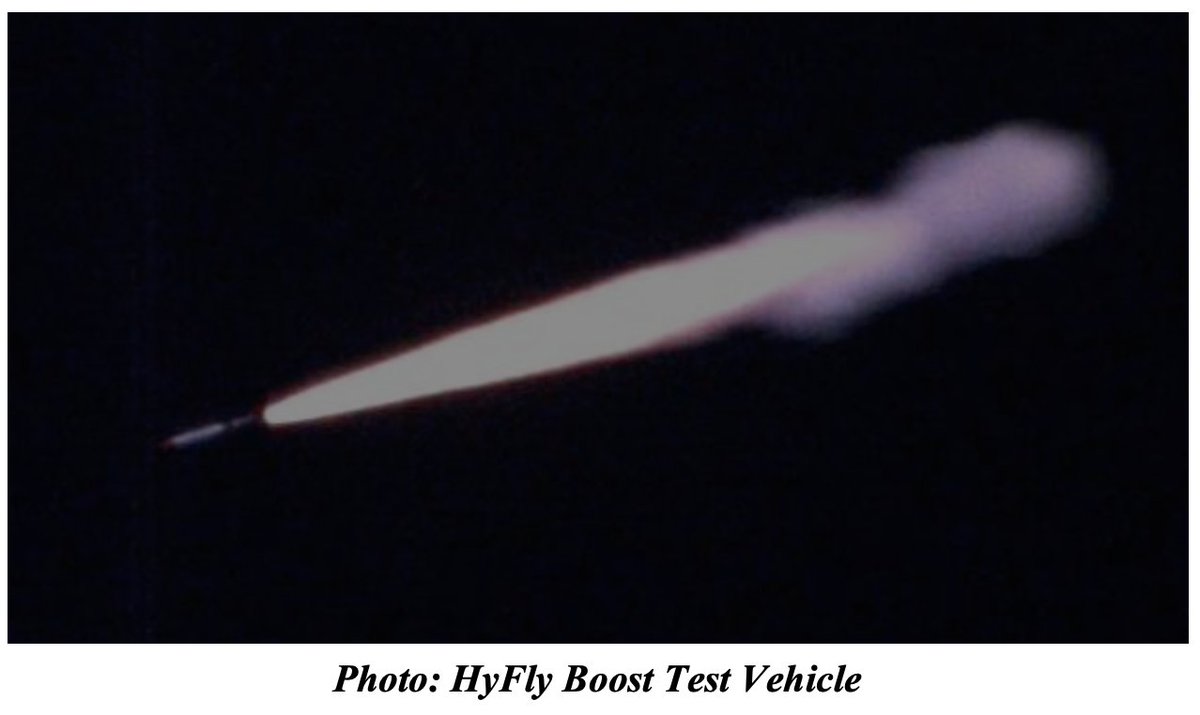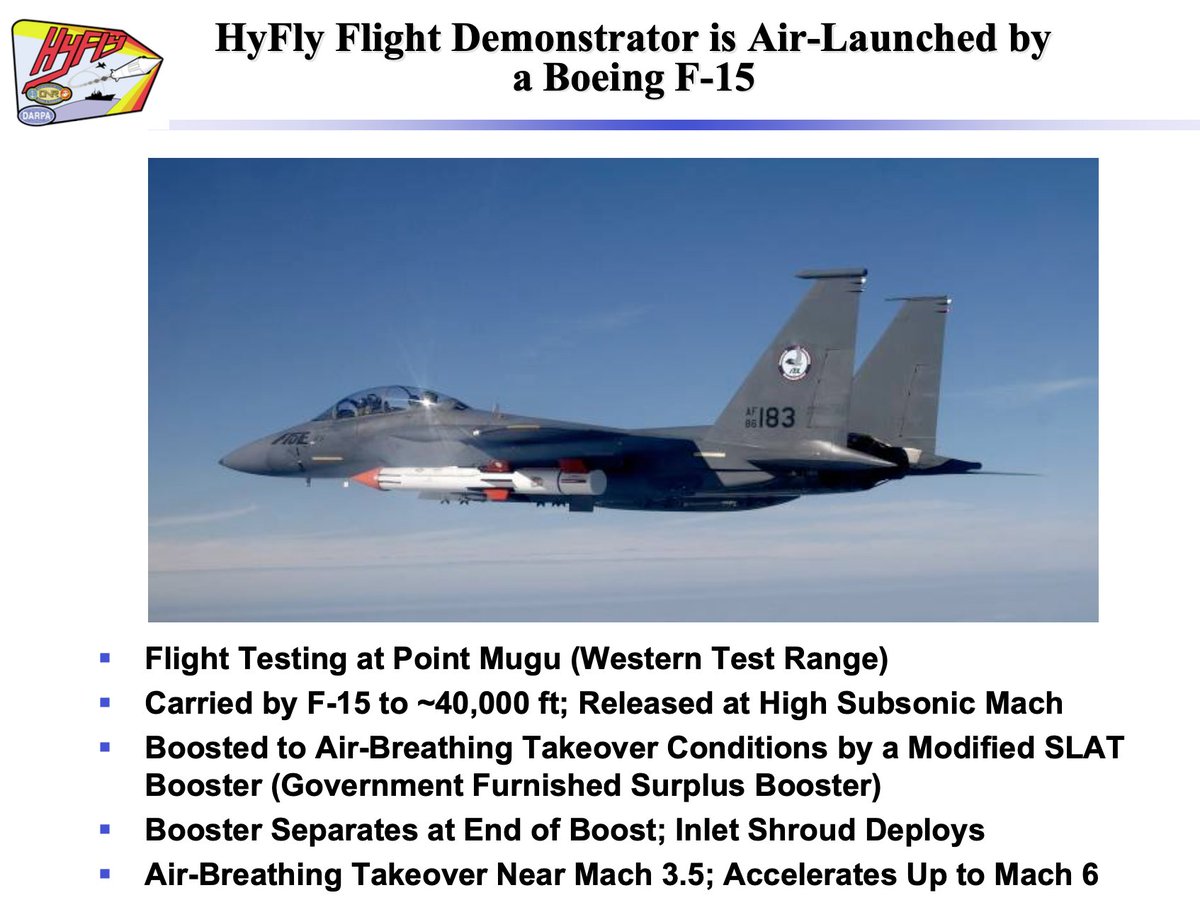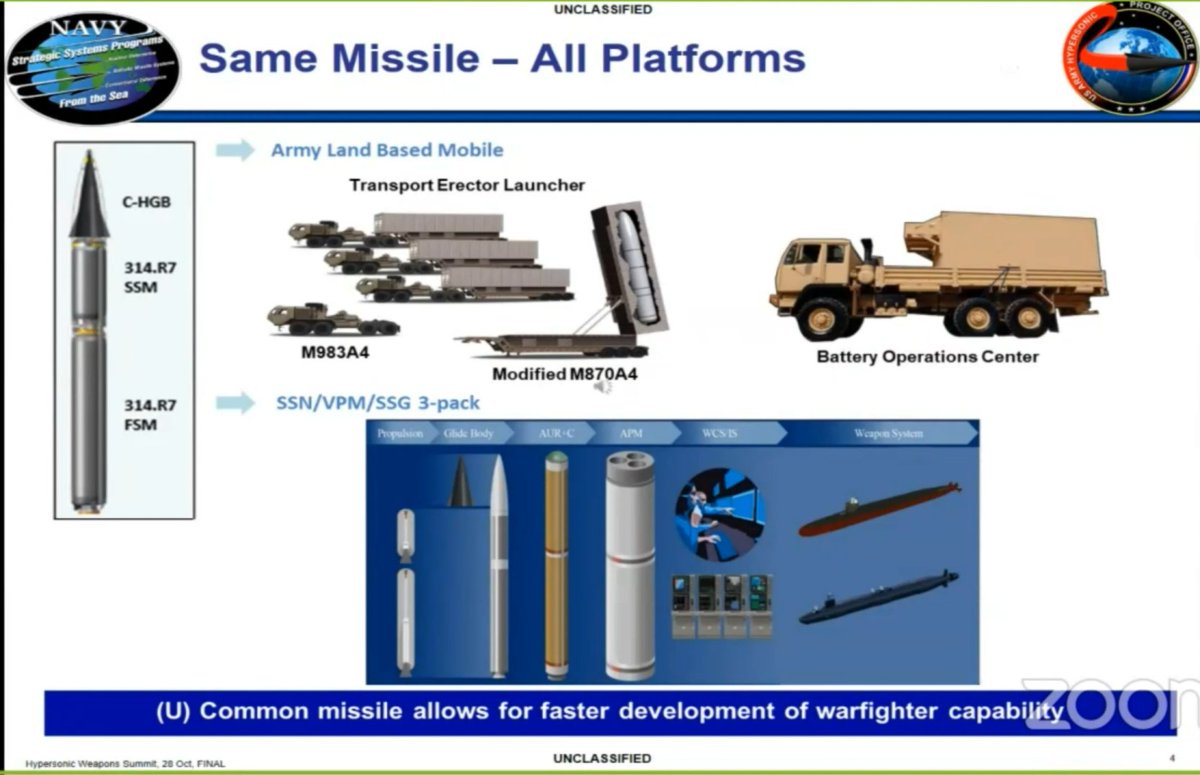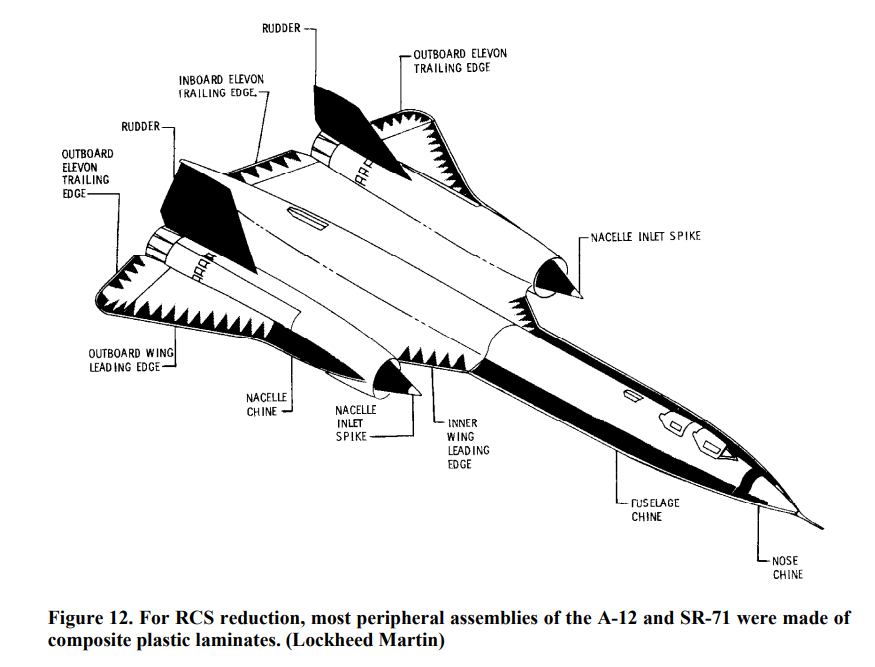
Dr. Gillian Bussey reveals ongoing work on HyFly 2 airbreathing hypersonic weapon at IDGA Hypersonic Summit. Intended for use on carrier-based aircraft. Original HyFly program ended w/ unsuccessful flights in 2006, 2007. HyFly 2 completed Critical Design Review in the last year. 


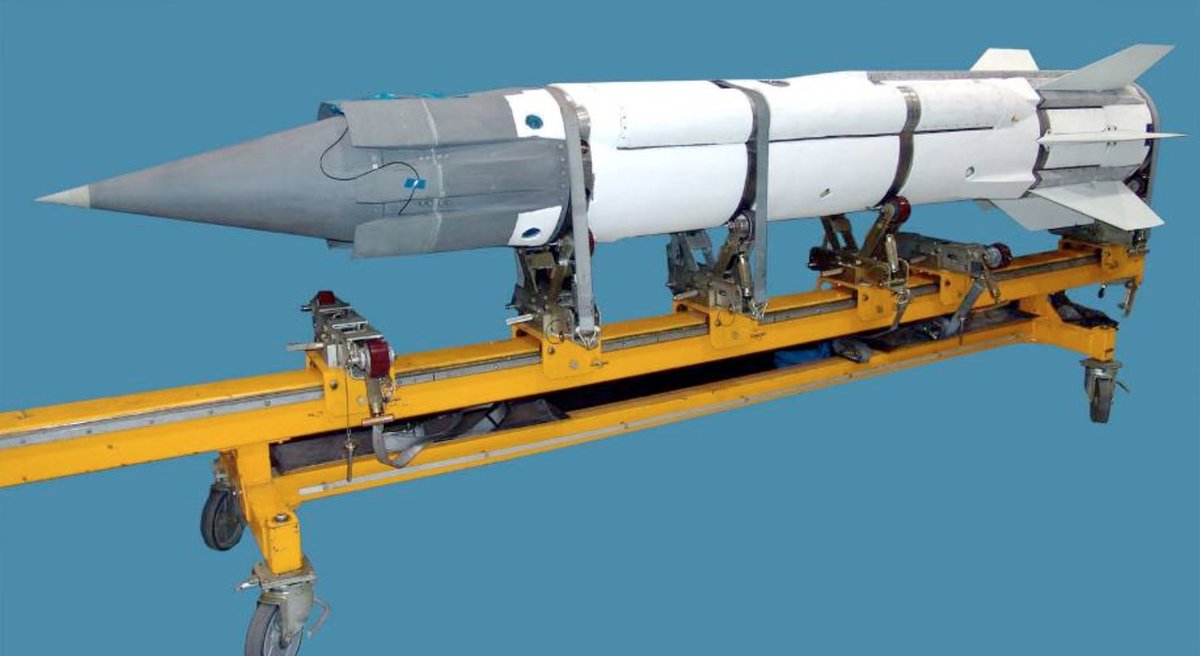
HyFly uses a Dual Combustion Ramjet, a hydrocarbon propulsion tech developed by JHU APL in 70s/80s and matured through HWT and ARRMD programs. Uses 2 sets of scoops & combustors for supersonic and subsonic combustion, allowing for performance over wider speed range up to Mach 6. 



China's National University of Defense Technology displayed a lookalike mockup, the Lingyun-1, in 2018. Unclear if it also leverages dual-mode scramjet tech.
See @Joshua_Pollack and @DRM_Long discussing at
thedefensepost.com/2018/05/21/chi…
See @Joshua_Pollack and @DRM_Long discussing at
thedefensepost.com/2018/05/21/chi…

The recent announcement confirms details of a dual-mode scramjet weapon @TheDEWLine revealed earlier this week.
https://twitter.com/TheDEWLine/status/1320814671591579655?s=20
CORRECTION: HyFly 2 in Preliminary Design Review process, not CDR.
• • •
Missing some Tweet in this thread? You can try to
force a refresh





